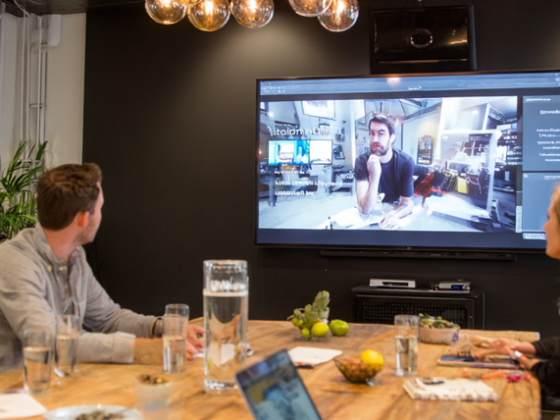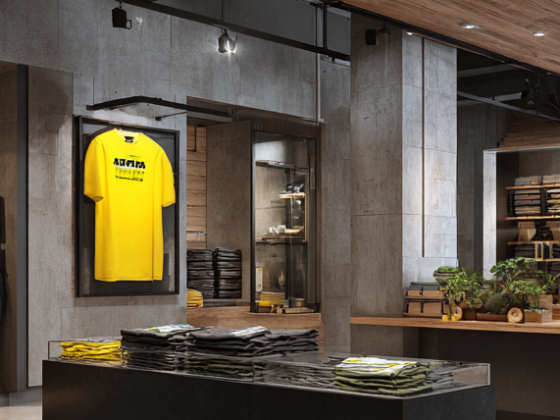share this article
Emerging Trends in DTC Brands
Direct-to-consumer isn’t new. But it is changing quickly, and brands who want to take their DTC brand into physical retail need to rethink how they engage with customers and how their online success can be reimagined in physical store design. But we don’t have to guess where things are headed with DTC and its overall position in retail strategy. Brands like GOAT USA, Gorjana, and Skims are already showing us how today’s DTC successfully translates their brands to physical spaces.
From Live Shopping to Live Experiences with GOAT USA
We’ve seen the way live shopping has taken off in Asia over the last decade. But the U.S. live shopping model is quite different, and it may be why GOAT USA was able to translate their live shopping model to their in-person experience.
Have you ever attended a live shopping event with GOAT USA? It’s not about pushing sales. The founders are chatting casually; attendees are commenting in real time. And before you know it, products are selling out. It’s not an over-produced infomercial; it’s a hangout. And that’s the magic. They’re creating a live shopping experience where customers aren’t just being sold to; it’s more like a clubhouse where the consumers included.
GOAT USA used that clubhouse community they built in their live shopping experience to define their in-person retail experience. Their retail locations have become physical extensions of the live shopping “clubhouse” energy their customers know and love. Customers don’t come to their stores just to buy; they feel like they belong there. GOAT USA has demonstrated that physical stores aren’t only about driving foot traffic. They give consumers a place to feel at home.

From Social Selling to In-Person Social
Gorjana is a jewelry brand that has turned social selling into a goldmine. They offer their customers a seamless experience. If you’ve ever watched a Gorjana product drop on Instagram, it’s a wild experience. Within seconds, the comment section is filled with consumers who have made a purchase.
What makes it work? Gorjana focuses on making their jewelry a must-have part of the lifestyle their consumers want – something that’s personal and aspirational but still accessible.
Gorjana has had success with their physical locations because they treat their brick-and-mortars as more than a shopping experience, but as a true lifestyle destination. Consumers step through the doors of their shops so they can experience the brand. Walking into a Gorjana store feels like scrolling their Instagram feed. It’s clean, approachable, and personal. Gorjana has succeeded by bringing the social selling experience full circle into the physical world.

Influencers Showing Up for Brands They Love
Influencer marketing used to mean getting a big-name celebrity to push your product. Today, it’s more about getting every consumer to become a brand evangelist. Sure, Kim Kardashian’s celebrity status matters, but SKIMS has turned influencer marketing on its head by attracting a wide range of influencers who are eager to share how the products actually fit. In fact, “SKIMS try-on” videos, where women of every body type share their honest opinion, has gone viral – and Skims encourages these honest reviews, relying on the level of transparency these videos offer to build trust in their brand.
“SKIMS doesn’t advertise. It orchestrates moments,” explains Minal Lohar for Tacitone. “This isn’t just about Kim’s massive social reach (though that helps). It’s about the brand’s ability to blend celebrity, timing, and cultural relevance into campaigns that feel less like ads and more like events.”
SKIMS’ DTC to physical retail strategy is right out of the ASG playbook: leverage that deep DTC data, create partnerships, and meet customers where they are. And it’s working – SKIMS is approaching a billion dollars in sales this year, with plans to open 22 more stores.

From Online Momentum to In-Person Presence
The success of GOAT USA, Gorjana, and Skims may have started online, but each of these brands has translated that digital success into physical stores by holding tight to their DTC roots.
The lesson for retail leaders: DTC success doesn’t end online. That’s just the beginning. And the most successful physical stores aren’t going to feel like legacy retail. They’re going to be real-world manifestations of the digital brand experience their consumers already love.
The question isn’t if you should go physical; it’s how you bring your DTC brand to life offline in a way that feels authentic, differentiated, and deliberately designed. Get our guide to launching physical stores from DTC roots.




